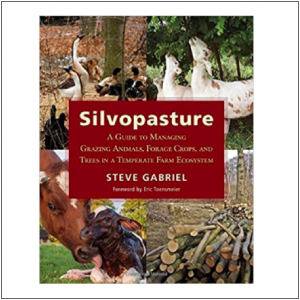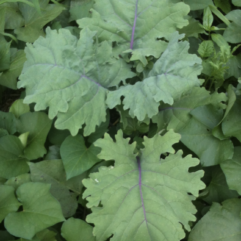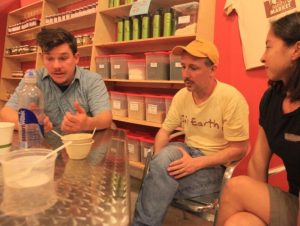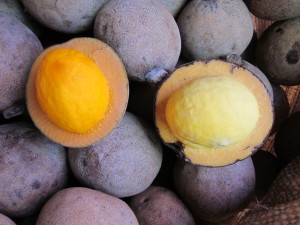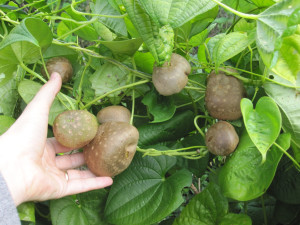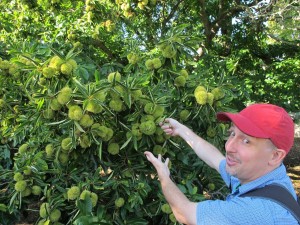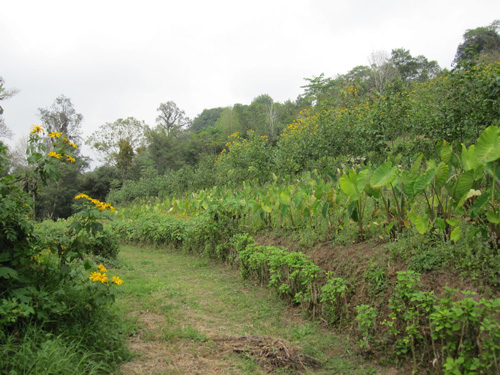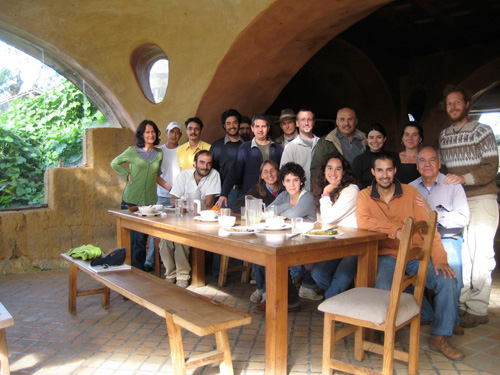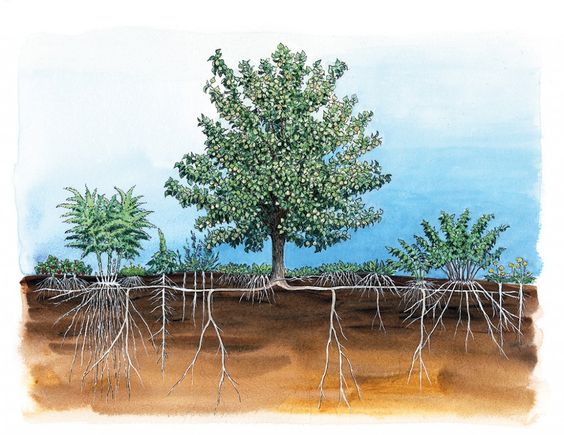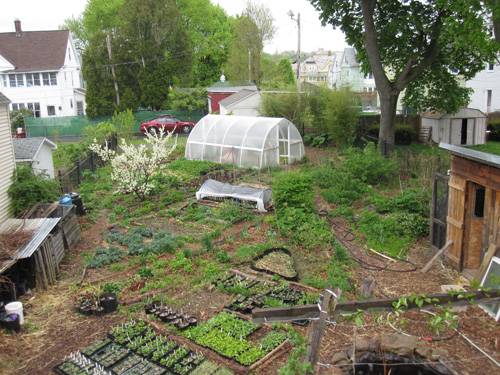Inspired by the Schaghticoke Land Reclamation Project, I’ve been updating my lists of plants that were farmed and wild-managed in the Eastern US by Native Americans before colonization. The region included here is the deciduous forest area of the eastern US and southeastern Canada, roughly corresponding to USDA zones 4-7.
This is part of effort to reconstruct what this landscape would have looked like – for historical reasons, to cast light on genocide, but also for eco-cultural restoration. Here’s part of my efforts with Woodbine Ecology Center to do the same for the foothills of the Rocky Mountains. It is also part of the acknowledgement of native peoples whose land this is. Of course many of these plants are still grown, wild-managed, and used daily by Native people of the eastern forest region.
This was a land of groves of cultivated fruit and nut trees. Some were grown in orchards, while others grew in annual crop fields in ancient agroforestry systems. Native bamboo was also cultivated and widely distributed. Fire-management of forests produced park-like stands of chestnut, walnuts, hickories, and oaks, with berries below. This system will be revisited in a future post. In fact I hope to post a number of articles on various aspects of the subject.
This post includes only woody plants, and only those that were recorded as being cultivated. There is no reason at all to assume that these were the only cultivated species. Surely persimmons, chestnuts, gooseberries and currants, and black walnuts were also planted and tended. Many annuals were also cultivated, as were herbaceous perennials. Stay tuned for posts on these.
Particularly useful resources have included Food Plants of the North American Indians (V. Harvard), Cultivated landscapes of North America (William Doolittle), Giant Cane: Arundinaria gigantea (USDA NRCS), and Native American Ethnobotany (see their online database).
NUTS
Pecan – Carya illinoiensis
Pecans (and perhaps other hickories, the written records are unclear) were grown in orchards as nut crops. Called pskssni in Miami-Illinois, and a typeof hickory, which get their name from the Angonquian language pawcohiccoria. 
Image Eric Toensmeier CC BY-SA 4.0.
FRUITS
Red Mulberry (Morus rubra).
Mulberries are described as growing around villages, interspersed in fields (irregular intercropping agroforestry) and grown in orchards. The fruits were consumed as well as the edible leaves. Called oakhattim inschi in Delaware.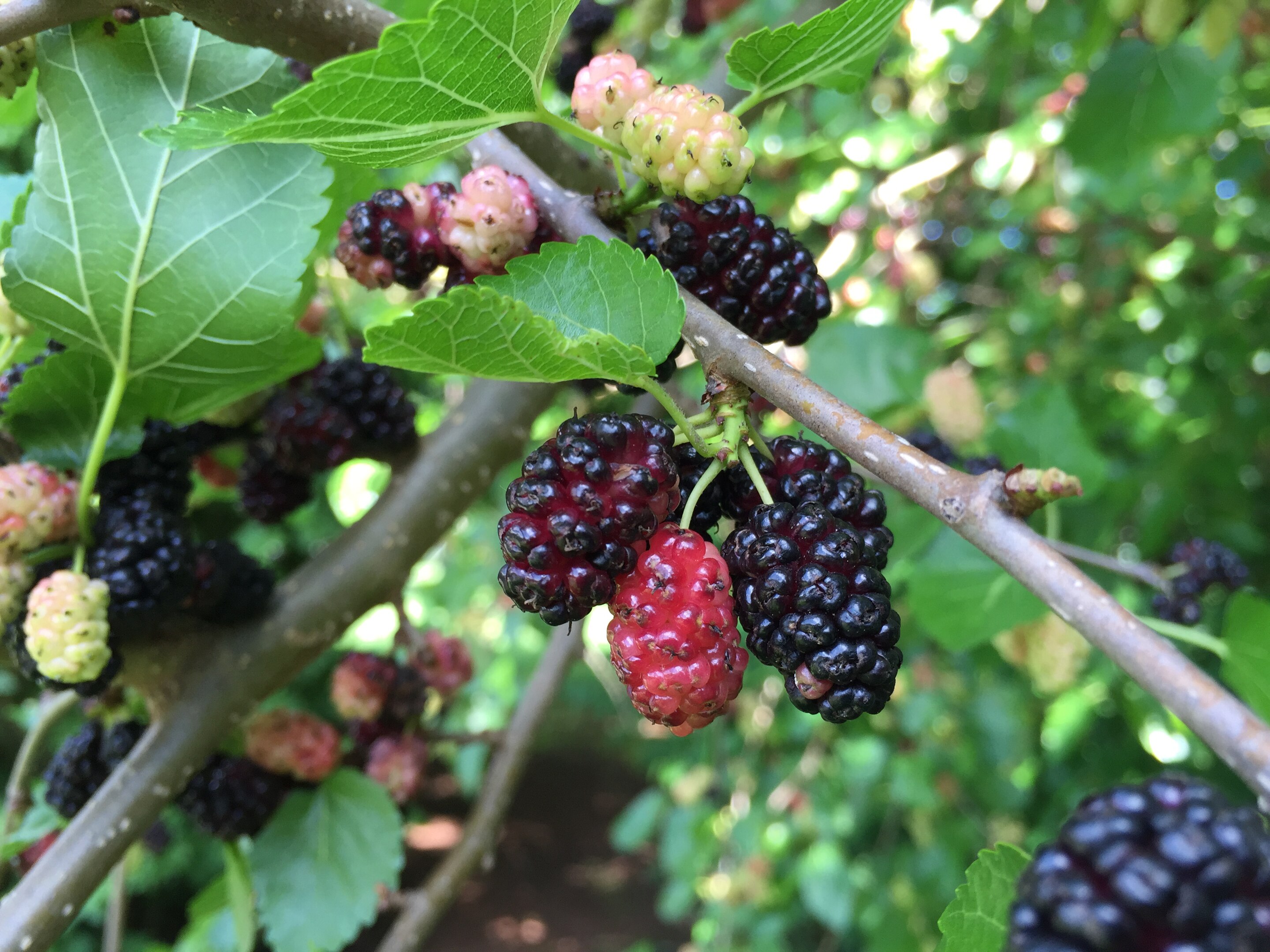
Image Famartin CC BY- SA 4.0.
Native Plums (Prunus americana, hortulana, nigra)
Plums are widely noted by European chroniclers. Many in the US southeast were P. hortulana, which we know because the trees were upright standards without suckers, and this is the only native plum with this growth form. Farther north P. americana and P. nigra were cultivated. Plums were grown in orchards and interspersed in crop fields. P. americana is called tischo in Onondaga, and P. nigra is buge sanatig in Ojibwa.

Image Eric Toensmeier CC BY-SA 4.0.
Pawpaw (Asimina triloba)
Pawpaws were cultivated but little is recorded about what techniques were used. Pawpaw’s Latin name is derived from the Illiniwek name rassimina.

Image Eric Toensmeier CC BY-SA 4.0.
Iowa Crabapple (Malus ioensis)
This native crabapple is recorded as being cultivated as a fruit crop.
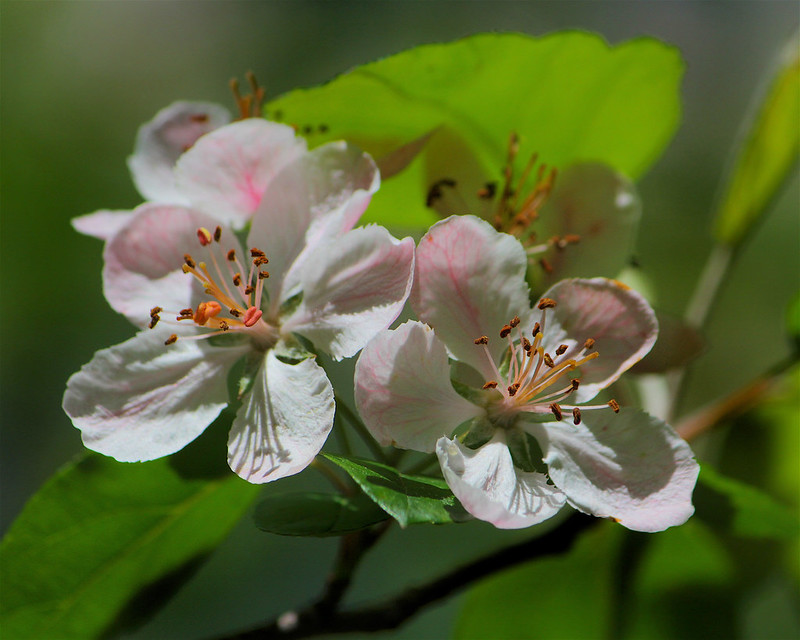
Image Dan Mullen MCC BY-NC-ND 2.0
“Cherries” (Prunus virginiana, perhaps others)
Chokecherry (P. virginiana) was extensively wild-managed and cultivated in some areas. It is known as taya in Cherokee and sawe min in Ojibwa. Some records note cultivated cherries, but not what species was grown. Possibilities include: the black and pin cherries (P. serotina and P. pensylvanica respectively ),one or both of which are called taya gadaseihi in Ojibwa, and the sand cherry P. pumila, sewa’komin in Ojibwa.

Sand cherry. Image Eric Toensmeier CC BY-SA 4.0.
Cane Fruits (Rubus spp.)
Some raspberry and/or blackberry species were cultivated, but the species is uncertain. Many Rubus species were also wild-managed as they respond well to fire are were noted as abundant in the understory of fire-managed chestnut and oak forests. Native red raspberry (R. idaeus) is called meskwa min in Ojibwa. Black raspberry (R. occidentalis) is sodiwutli in Cherokee. Blackberries (of which we have many species including R. allegheniensis) is o’dataga gomic in Ojibwa.

Native red raspberry. Image Eric Toensmeier CC BY-SA 4.0.
Grapes (Vitis labrusca)
Of our many native eastern grapes, fox grape (V. labrusca) is the finest. The variety “Concord” is a representative of this genus. This species is called telahadi in Cherokee. Farther south the muscadine (V. rotundifolia) was also cultivated.
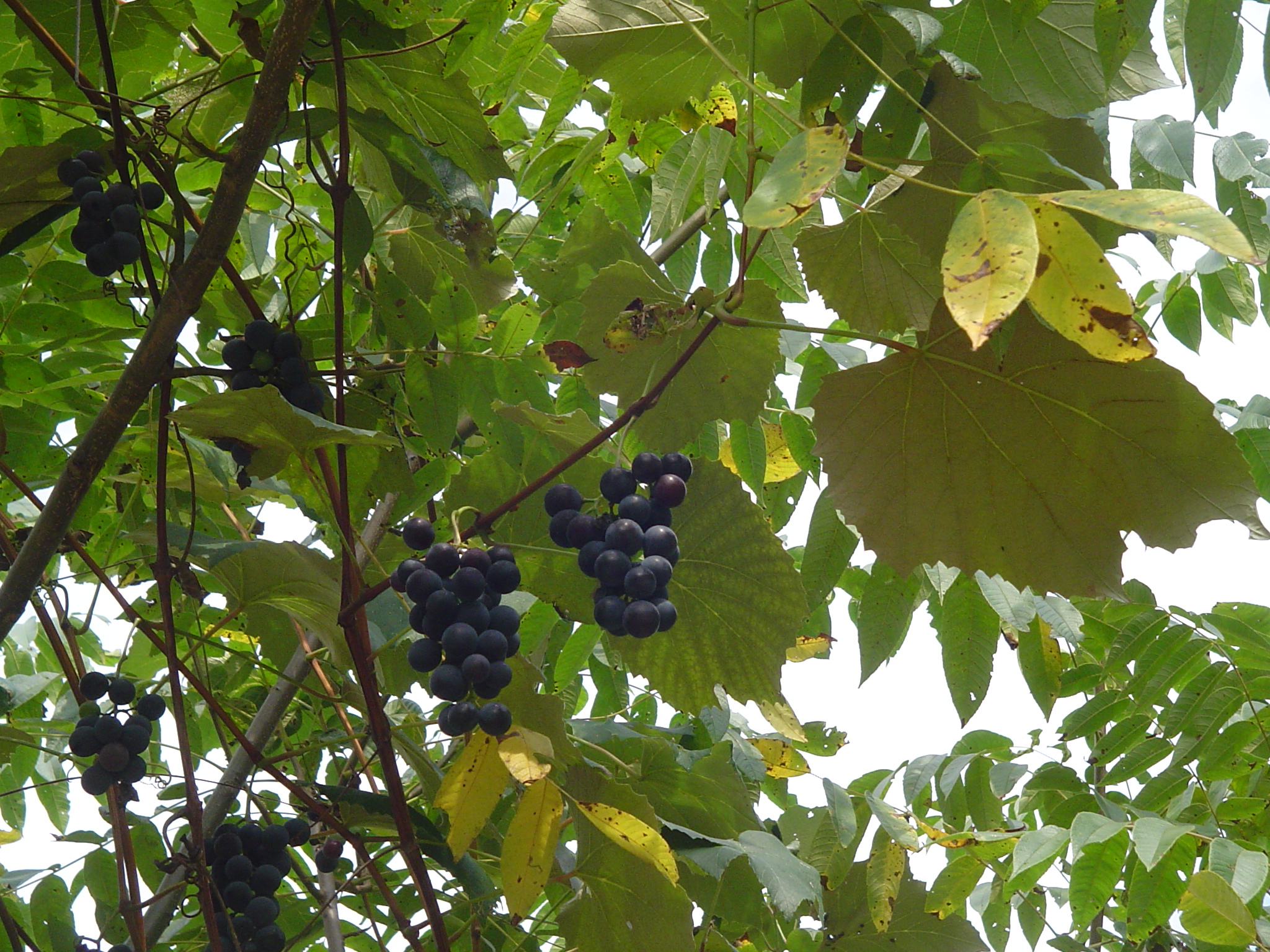
Image Eric Toensmeier CC BY-SA 4.0.
OTHER CROPS
Canebrake bamboo (Arundinaria gigantea)
The eastern US was a bamboo landscape as a result of the cultivation and wild-management of this native bamboo. To this day Native people in Arkansas and elsewhere use this bamboo for hundreds of uses – just as people in Asia, Africa, and Latin America use their native bamboos. This species is called nissakan in Powhatan.
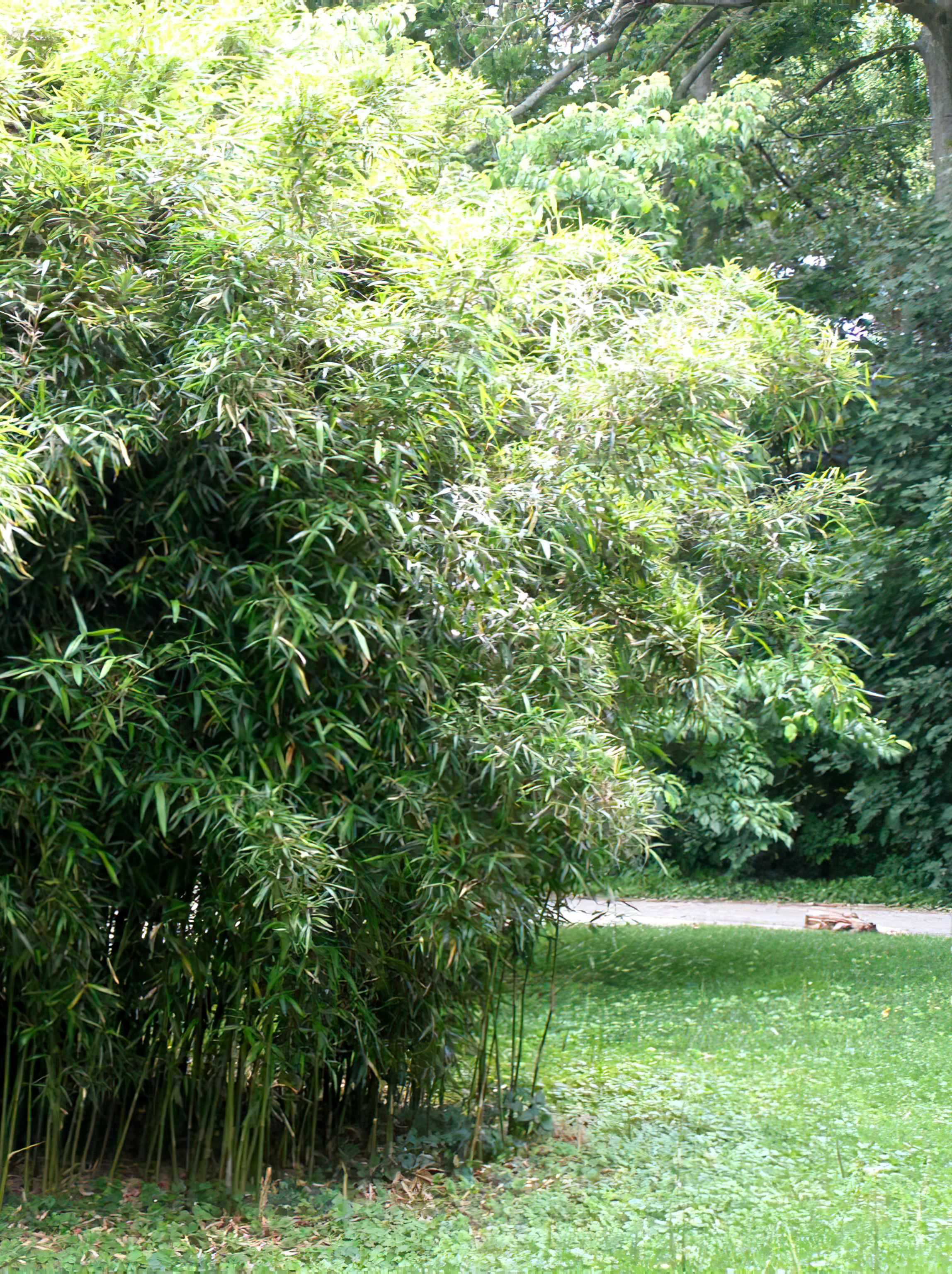 Image Chris Light CC BY-SA 4.0.
Image Chris Light CC BY-SA 4.0.
Yaupon Holly (Ilex vomitoria)
This species is our only native source of caffeine. At the time of colonization it was widely cultivated, and traded far beyond it’s warm temperate range. It is in the same genus as mate and guayusa from South America. The English name is derived from the Catawban name yopún.
 Image David Stang CC BY-SA 4.0.
Image David Stang CC BY-SA 4.0.

